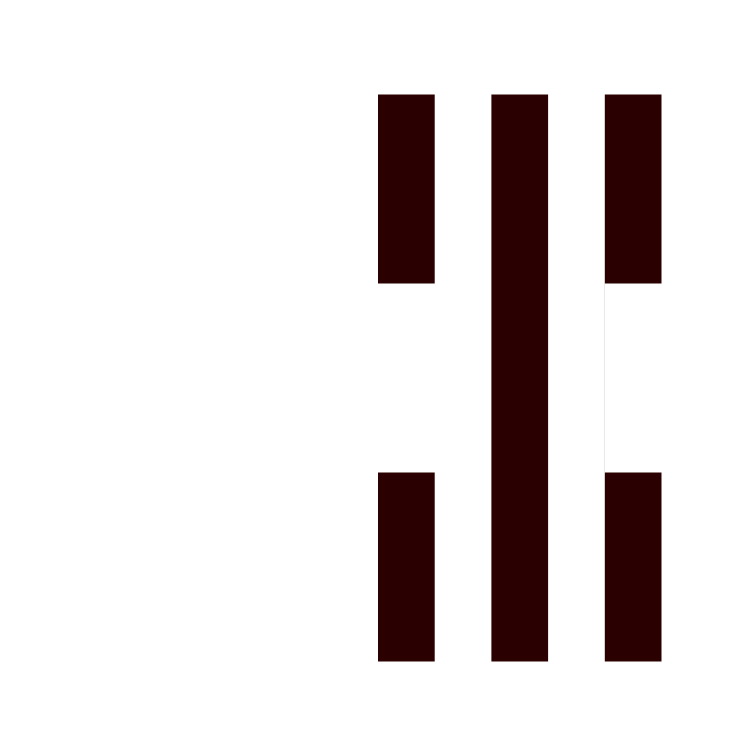


The solid and broken bars in the eight image tiles in the top navigation are called trigrams. The octagonal trigram pattern is a common symbol for the Chinese term Bagua. The pattern has eight (ba) areas (guas). "South" is always found at the top of the Bagua. Each trigram represents a particular natural phenomena: Sky ☰, Lake ☱, Fire ☲, Thunder ☳, Wind ☴, Water ☵, Mountain ☶, Earth ☷. If you click on a , it will take you to the corresponding taekwondo form page. Each form has a trigram which I describe scientifically and call scigrams. The animation in the middle of the tiles is supposed to represent a kicking woman. A tangram is a puzzle which originated in China. It is created out of seven flat polygons that can be put together to form shapes.
I made this site in 2011 when I was still practicing Tae Kwon Do. I made it up to red belt (7th poomsae) and then I didn't pursue it any more. At one of the dojangs, the Master shouted the instructions for the movements in Korean and I learnt some of the Korean in that way. But I never took a class in Korean and this website is just a compilation of all the Korean terms that I found on the Internet.
I just started practicing TaeKwonDo again in February 2023. The master at my new dojang let me keep my red belt even though I didn't have certificates to prove that I had earned it. That was a relief because a dojang that I had been at for a couple of months in 2022 said that I had to wear a white belt and start all over from scratch. I don't remember all of the choreography for the forms (Poomsaes) just like I don't remember all of the Hangul I learnt but I can still remember some of the Korean terms for the movements. There's a Korean master at my new dojang but he says he doesn't say the movements in Korean because it confuses the children.
Letters in the Korean alphabet are called jamo. There are 19 initial consonants and 21 medial ( in the middle of a word) vowels used in the modern alphabet. Of the vowels there are 6 basic, 6 Y sounds, and 9 dipthongs (2 vowels that are combined to make a new sound). Of the consonants, there are 5 aspirated, and 5 double. Here are the six basic vowels:
| ㅏ a |
ㅓ eo |
ㅗ o |
ㅜ u |
ㅡ eu |
ㅣ i(e) |
You can learn the six basic vowels easily enough, because they look much alike. There's just a stick figure with a line poking out at its waist and pointing to the right ㅏ, then to the left ㅓ, then to the top ㅗ, and then to the bottom ㅜ After these there is just a horizontal and then a vertical line.
In fact, the vowels were conceived even more simply than that. There was originally just a dot ㆍ to represent Heaven (the essence of yang), which later became a short stroke, a horizontal line ㅡ to represent the Earth (the essence of yin), and a vertical line to represent an upright human ㅣ (a vertical line like a stick figure).
Now, take a look at the following table which is set up much like a table of addition in order to see how the vowels are added together. The fuchsia colored vowels are the 9 dipthongs and the lime-green colored vowels are the 6 Y sounds.
| Basic Vowels | +i (or +e) | ||||||||||
|---|---|---|---|---|---|---|---|---|---|---|---|
| ㅏ a |
ㅓ eo |
ㅗ o |
ㅜ u |
ㅡ eu |
ㅣ i |
ㅐ ae |
ㅔ e |
ㅚ oe |
ㅟ wi |
ㅢ ui |
|
| y + | ㅑ ya |
ㅕ yeo |
ㅛ yo |
ㅠ yu |
ㅒ yae |
ㅖ ye |
|||||
| w+ | ㅘ wa |
ㅝ weo |
ㅙ wae |
ㅞ we |
|||||||
The 6 Y Sounds
Everything that has two short, parallel strokes is pronounced with a y. These are the jamos: ㅑ,ㅕ, ㅛ, ㅠ, ㅒ, andㅖ. You use the sound belonging to the vowel and just put a y in front of it, so:
| y + ㅏ | = | y + a | = | ya | = | ㅑ |
| y + ㅓ | = | y + eo | = | yeo | = | ㅕ |
| y + ㅗ | = | y + o | = | yo | = | ㅛ |
| y + ㅜ | = | y + u | = | yu | = | ㅠ |
| y + ㅐ | = | y + ae | = | yae | = | ㅒ |
| y + ㅔ | = | y + e | = | ye | = | ㅖ |
The 9 Dipthongs
There are 6 W-dipthongs and 3 additional dipthongs.
6 W-dipthongs
All of the vowels formed with the basic vowels ㅗ and ㅜ form vowels that start with a w:
| + | ㅏ a |
ㅓ eo |
ㅐ ae |
ㅔ e |
ㅣ (e) |
| ㅗ w+ |
ㅗ + ㅏ = ㅘ w + a = wa |
ㅗ + ㅐ = ㅙ w + ae = wae |
ㅗ + ㅣ = ㅚ w + (e) = we |
||
| ㅜ w+ |
ㅜ + ㅓ = ㅝ w + eo = weo |
ㅜ + ㅔ = ㅞ w + e = we |
ㅜ + ㅣ = ㅟ w + (e) = we |
3 Dipthongs made with I
Three additional dipthongs are made by combining five of the six basic vowels with the ㅣ character (ee). Two of the additional dipthongs have already been accounted for as W-dipthongs so they aren't highlighted in fuchsia.
| + | ㅏ a |
ㅓ eo |
ㅗ o |
ㅜ u |
ㅡ eu |
ㅣ i |
| ㅣ + (e) |
ㅏ + ㅣ = ㅐ a + e = ae |
ㅓ + ㅣ = ㅔ eo + e = eo |
ㅗ + ㅣ = ㅚ w + (e) = we |
ㅜ + ㅣ = ㅟ w + (e) = we |
ㅡ + ㅣ = ㅢ eu + i = ui |
19 Initial Consonants
Next you can learn the sequence and sounds of the nineteen initial consonants so that you know where to look up a word when you open up a Korean-English dictionary. In the table below, there are 9 basic consonants, 5 aspirated consonants, and 5 double consonants. The aspirated consonants are in white boxes. Aspirated means that they're sounds pronounced with an exhalation of breath. The double consonants are pronounced the same way as their singular version except that they are spoken by tensing your mouth while saying them. They are in the light blue boxes.
| ㄱ g |
ㄴ n |
ㄷ d |
ㄹ r/l |
ㅁ m |
ㅂ b |
ㅅ s |
ㅇ ng |
ㅈ j |
| ㅋ k |
ㅌ t |
ㅍ p |
ㅎ h |
ㅊ ch |
||||
| ᄁ gg |
ᄄ dd |
ᄈ bb |
ᄊ ss |
ᄍ jj |
In 1446 King Sejong called for extensive research to be conducted in order to create a writing system that didn't require Chinese characters to write the spoken Korean language.
From [asianinfo.org]:
One of his most celebrated achievements was the creation of the Korean alphabet, Han-gul. Aware that his people must have a writing system designed to express the language of their everyday speech, and desirous that all his subjects be able to learn and use it, King Sejong impelled scholars of the Hall of Worthies to devise the alphabet. The Korean alphabet, which consists of 11 vowels and 17 consonants, possesses geometric beauty, simplicity and scientific accuracy, and as such, can be learned by an uneducated man in a matter of hours.
"Korean Hangeul alphabet in 1443 had 17 consonants and 11 vowels, total 28" -The Korea Herald.
All of the consonants were designed to depict the shapes of the speech organs. For example, "the symbol ㄱ k [g] depicts the shape of the root of the tongue blocking the throat." and the consonant ㅁ was designed to depict the shape of the mouth. If you are interested in reading about how the consonants reflect the physical formation of speech, then read pages 129ff. in [Ho-Min Sohn]'s The Korean Language (1999) This book describes the Korean language in historical and cultural terms.
I was trying to understand how the consonant letters depicted the shape of the speech organs because I was still getting the symbols for g and n confused. I thought about the shape of my tongue while I said the word Ghana. When I say Gha, then my tongue touches the bottom of my mouth just behind my bottom row of teeth. If I had to draw a picture of my tongue, it would look like a capital L facing the wrong way and this is not even a Korean symbol at all. If I had to draw a picture of my tongue pronouncing na, it would look like this: ㄴ. I can feel that the top of my tongue touches the roof of my mouth just behind my top row of teeth, so this one makes sense to me. But how was I going to remember g?
I kept trying to see why the inventor of Hangul, King Sejong, thought that a ㄱ could represent the shape of the mouth pronouncing a g and then I tried pronouncing a k instead of a g. This time it worked. Since k is more aspirated than g, you can actually feel that the root of your tongue does block your throat.
I previously listed some mnemonics to learn the jamos but I deleted them because they weren't that useful. I had a hard time understanding how the jamos were based on the physical shape of pronunciations but I found a more simple way to remember the right character by following the mnemonic illustrations in a book that I found at a college bookstore: Reading & Writing Korean by Jieun [Kiaer] and Derek Driggs. For the consonant g ㄱ, for example, you can remember the shape because the consonant is superimposed on to the illustration of a gun and the consonant n ㄴ is superimposed on the illustration of a person napping.
SOURCES
www.asianinfo.org/asianinfo/korea/history/early_choson_period.htm:The Korean Language (1999) by Ho-Min Sohn
Reading & Writing Korean (2021) by Jieun Kiaer and Derek Driggs.
| Learn just enough Hangeul to complete a crossword puzzle! | |
GO TO HANGEUL CROSSWORD PUZZLE | |
| PDF documents with taekwondo vocabulary in English, Hangeul, and transliterated Hangeul to download. I had a native Korean proofread the original documents and he corrected the Hangeul in red pen. | ||
| TKD Vocabulary: Korean to English | Vocabulary for Forms | TKD Vocabulary: English to Korean |
